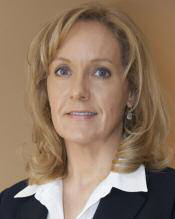Secure Financial Peace of Mind for Loved Ones
by Pam Mundell, CFP, CLU, CHS
Any parent or grandparent understands the importance of planning to provide for their loved ones.This becomes especially important when adult children cannot support themselves financially due to a disability.
The Registered Disability Savings Plan (RDSP) was introduced in 2008 by the Government of Canada to help address the financial challenges people with disabilities face.To assist in the savings, the government offers Canada Disability Savings Grants (CDSGs) and Canada Disability Savings Bonds (CDSBs), both of which can be deposited into the individual’s RDSP to help accumulate savings.
What is a Registered Disability Savings Plan?
The RDSP is a tax-deferred savings vehicle to help parents or grandparents save for the long-term financial security of a loved one with a disability. To be eligible, you must:
– Be a resident of Canada.
– Be eligible for the Disability Tax Credit.
– Be less than 60 years of age.
– Have a Canadian SIN.
How do I apply for the Disability Tax Credit?
The Disability Tax Credit (DTC) is a non-refundable tax credit available to individuals who, in a given taxation year, have one or more severe and prolonged impairments in phys- ical or mental functions, the effects of which have been certified in writing by a medical practitioner and approved by the Canada Revenue Agency (CRA).The disability amount is used to reduce income tax payable on your tax return.All, or part, of this amount can be transferred to a spouse or common law partner, or another supporting person (parent). Individuals can apply to the CRA for the DTC using form T2201. Form T2201 includes an information section to help you determine if you should apply for the DTC, an application section (part A), and a certification section (part B) which must be completed by a medical practitioner.
A child or an adult can apply for the DTC and the application must be approved by CRA before any tax credit is available.
How do I open a RDSP account?
The beneficiary of the RDSP is the person with the disability, and only one RDSP can be established for a beneficiary.If the beneficiary is under the age of 18, a parent can open a plan for their child and the parent, or parents, would be the account holder of the plan and would be the principal decision-maker. Once the beneficiary is 18 years of age, they would be able to open the plan, be the account holder of the plan, and also be the beneficiary, unless they are not legally competent to sign a contract.When the beneficiary is not legally able to sign a contract, the person legally authorized to act on behalf of the disabled individual can open the plan.
Benefits
Contributions to the RDSP attract a matching CDSG of up to 300 per cent, depending on the amount contributed and the family net income. Contributions to the plan are not a tax deduction, however the earnings grow tax-free while held within the plan. Contributions for the RDSP can be made by:
– the account holder;
– individuals the account holder has authorized to make contributions;
– federal grants and bonds;
– transfers from a qualified Registered Retirement Savings Plan,
– a Registered Retirement Income Fund,or a Registered Pension Plan;
– and transfers from the accumulated income in a Registered Education Savings Plan (RESP) on which the beneficiary is on both RESP and RDSP.
The maximum lifetime contribution room is $200,000 per beneficiary, and the last year to contribute is the year the beneficiary turns 59 years of age.There is no annual limit, however there is a strategy to take advantage of the maximum CDSGs available.The maximum lifetime grant (CDSG) is $70,000 per beneficiary, and is available until December 31 of the year the beneficiary turns 49 years of age.
Canada Disability Savings Bonds
The Canada Disability Savings Bond (CDSB) is available for individuals or a family with a lower net income.The government may deposit up to $1,000 per year to the RDSP of a low-income beneficiary, regardless of any contribution into the plan.This is especially helpful for an individual who has limited earnings to save within the plan.
The maximum lifetime limit is $20,000 per beneficiary and is payable until the end of the year in which the beneficiary reaches 49 years of age.
Planning strategy
The grant (CDSG) and the bond (CDSB) are both subject to family net income. If the beneficiary is under the age of 18 (minor beneficiary),the family net income is that of his or her parents. If the beneficiary is 18 and over, the family net income is based on the beneficiary and also the spouse or common law partner, if applicable.
Meet Colleen and Drew
Colleen and Drew have a 17-year-old daughter, Sarah, who qualifies for the DTC.They are concerned about what will happen to Sarah when they are no longer able to care for her, and want to provide for her financially. Once Sarah turns 18 next month, she will be in receipt of the Ontario Disability Support Program (ODSP). Colleen and Drew take Sarah to their financial advisor and arrange to open a RDSP in Sarah’s name. Sarah will be the account holder of the plan and also the beneficiary.Sarah can sign her name to the contract and has a basic understanding that she is opening a long-term savings plan. Sarah plans on contributing a total of $1,500 per year to her RDSP from her monthly ODSP, and because Sarah’s net income is less than $26,021 (January 2015 limits), she will attract 300 per cent CDSG on the first $500 into her RDSP and another 200 per cent CDSG on the next $1,000 contribution into her RDSP.Sarah’s$1,500of annual contribution attracts a total of $3,500 of the maximum annual CDSG. She is also eligible for the $1,000 CDSB, which is the maximum annual amount, and both the grant and the bond from the Government of Canada will be automatically deposited into Sarah’s RDSP. Sarah plans to contribute $1,500 each year, and if her income remains below the $26,021 threshold, she will continue to attract the maximum grant and bond each year.
Long-term planning
A RDSP is a long-term plan suitable for when the person with the disability has reached the age of 59 and needs a regular source of income.Withdrawing funds within a 10-year time period of receiving either the grant or bond will trigger a repayment back to the government. This repayment is known as the Assistance Holdback Amount, and as of 2014, this was $3 for every $1 withdrawn.A RDSP would not be suitable for a shorter-term savings goal.
How do I take money out of my RDSP?
Withdrawals from a RDSP consist of the original contributions, investment income, CDSGs and CDSBs. Original contributions are non-taxable on withdrawal, but the investment income, CDSGs and CDSBs are fully taxable to the RDSP beneficiary when received. If the RDSP beneficiary has little or no income, they may have little, if any, tax liability.The taxable portion of the withdrawals will be reported on a T4A-RDSP tax form.
Other social assistance and long-term planning issues
Income from a RDSP does not impact other income-tested federal government programs, such as Old Age Security (OAS), the Guaranteed Income Supplement (GIS) and any provincial disability benefit program. RDSP assets should also not impact the eligibility for housing and long-term care, but it is important to note that each province has different programs in place to assist persons with disabilities. Be sure to check with your legal representative for current provincial legislation.
The RDSP can be used in combination with the Henson Trust to provide financial security to a person with a disability and ensure provincial benefits and other social assistance benefits are maintained for the beneficiary.Ifyouhaveafamilymemberorlovedone with a disability, speak to a qualified financial advisor about effective options for long-term financial success.
For further details, visit the Canada Revenue Agency website (www.cra.gc.ca) for current information regarding limits and income threshold amounts that affect CDSG and CDSB eligibility. n

Pam Mundell is a licensed independent investment and financial planner and principal of Pam Mundell Financial Planning Services in Kingston.
NOTE TO READERS: THE VIEWS OF THE AUTHOR DO NOT NECESSARILY REFLECT THOSE OF COYLE PUBLISHING.THIS ARTICLE IS PROVIDED AS A GENERAL SOURCE OF INFORMATION ONLY AND SHOULD NOT BE CONSIDERED TO BE PERSONAL INVESTMENT OR LEGAL ADVICE, OR A SOLICITATION TO BUY SERVICES. READERS SHOULD CONSULT WITH THEIR FINANCIAL OR LEGAL ADVISOR TO ENSURE IT IS SUITABLE FOR THEIR CIRCUMSTANCES.







